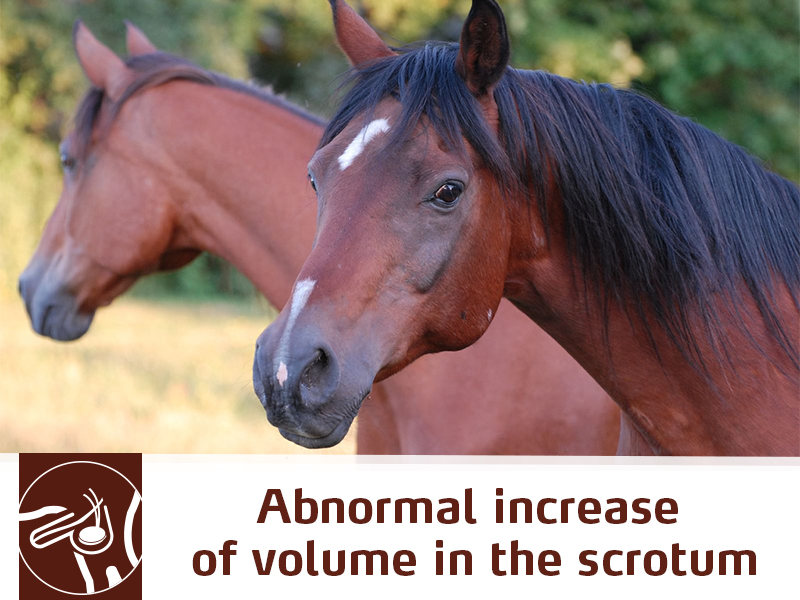
Abnormal increase of volume in the scrotum

The wellness of external genitalia is a very important component of the reproductive health in horses, especially in male horses. The scrotum houses the testicles and all the vascular and nerve support for them, functioning as one of the linchpins of the horse's reproductive system.
It is good practice to pay close attention and know scrotal characteristics, often how fast there is veterinary intervention will determine the outcome and future reproductive capacities of the stallion. Fortunately, it's an area that sits between the horse's hind legs and is reasonably well protected from harm.
Be on the lookout not only on size changes but also position and the presence of wounds on the skin or deeper tissues. The stallion's behaviour may be changed due to pain, they may become reluctant to jumping and even walking.
The causes of an abnormal increase of size are plentiful. The most common causes are trauma, scrotal or inguinal hernias (passing of other abdominal organs into the scrotum e.g.: small intestine lodged in scrotum due to weak muscles/rupture in the abdomen) and testicular torsion.
Other important causes include cancer, bacterial, viral or parasite infections or even auto-immune disorders (the horse's immune system is actively targeting its own tissues, usually the testicles and damaging them.)
Some of these conditions can cause irreversible impairment of fertility, especially if left without proper veterinary care for long periods of time. Semen collection and evaluation should be performed at around 90 days after the cause has been resolved or after surgery.
Keep an eye out on your stallion and save you (and him!) a world of trouble!
Would you like to know more about horses? Check our Equine Courses:
Equine courses
Read the previous article: Equine eye conditions

